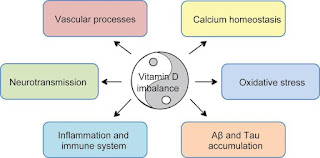Diagnostic Biomarkers for Stroke: A Stroke Neurologist’s Perspective
Human stroke is remarkably heterogeneous. Stroke varies widely in severity with a majority of strokes being mild. Stroke comes in 3 major types. In North America and Europe, ischemic stroke comprises 85% of all strokes, intracerebral hemorrhage 8%, and subarachnoid hemorrhage 7%. These ratios differ in Asia with up to 30% of strokes occurring as intracerebral hemorrhages. For the neurologist, stroke is relatively easy to diagnose clinically. It is the most common cause of a sudden acute neurologic deficit in both adults and children. Imaging is the mainstay of identifying stroke type because it is not possible to distinguish ischemia from hemorrhage reliably on clinical grounds alone.
A brain computed tomographic scan rules in an intracerebral hemorrhage or subarachnoid hemorrhage and in many cases rules in a diagnosis of ischemia. Acute computed tomography is insensitive to small-volume ischemia and therefore is usually normal in minor strokes and transient ischemic attack (TIA). Diffusion-weighted magnetic resonance imaging is more sensitive to small-volume ischemia, and T2* or gradient recall echo magnetic resonance imaging is sensitive to hemorrhage. Imaging rules out structural diagnoses such as tumors and subdural hematomas but does not rule out functional and metabolic stroke-mimics such as seizure with Todd paralysis, migraine with prolonged aura, and hypoglycemia with focal neurologic deficits. Therefore, although stroke is straightforward to diagnose for the expert, stroke-mimics still make up 20%–25% of all acute stroke evaluations by a stroke team.
Treatment for stroke is directed at pathophysiology. Ischemia can be treated with reperfusion strategies, and hemorrhage may, in the future, be treated with strategies to prevent hematoma enlargement. In both paradigms, time is critical. Earlier treatment gives better outcomes.
Where could a blood test fit into this diagnostic paradigm? The following are key clinical questions in the acute phase: (a) Is this a stroke or not? (b) If this is a stroke, is this ischemia or hemorrhage? Because no blood test will be 100% sensitive and specific, all patients will require brain imaging acutely before any treatment. Any blood test must therefore be complementary to or synergistic with imaging as a diagnostic marker.
Most proteins considered as biomarkers to date are derived from astroglia or neurons. Others, as in the report by Allard et al. in this issue, have been empirically isolated from cerebrospinal fluid (CSF) and then identified in plasma without clear knowledge of their derivation. Linking the quantitative assessment of the plasma protein with the volume of infarction, as has been done with S100B, is an important validating step. The blood–brain barrier has been thought to limit release of these proteins into the CSF and subsequently into the blood. These steps delay the peak increase of the biomarker in the blood, impairing the biochemical evaluation of stroke at very early time points after onset.
The approach of Allard et al.of evaluating isolated proteins from postmortem CSF is intriguing and may have merit. A cautionary note is that global brain ischemia is vastly different from focal ischemia in evolution and treatment. Still, it is of great interest that PARK7 and nucleoside diphosphate kinase A were increased in acute stroke patients. The increases in TIA patients are interesting but do not make intuitive sense if these biomarkers are correlated with the volume of ischemic brain. This suggests that they may be reflecting the process of brain infarction only indirectly.
The ideal study then would take a prospective cohort of sequential patients evaluated for acute stroke treatment, collect blood samples on these patients in the acute phase, and then compare the measured concentrations of selected markers with the final diagnoses. The patient population would include those identified by paramedics, nurses, and emergency department physicians and must include the large minority who have conditions that mimic stroke. Blood samples would need to be taken early (within 3 h of symptom onset and perhaps beginning in the ambulance) and over time to observe the evolution of the concentration of the marker in plasma. Comparison of marker concentrations (and, perhaps, the areas under concentration–time curves) with imaging and final infarct volume would be critical. Comparison of under-3-h results with 72-h results would be informative.
The advantages of a blood test that could be checked in the ambulance would be overwhelming. Already, clinical trials are underway in stroke treatments beginning in the field. Diagnostic certainty based on a point-of-care biochemical test would greatly facilitate this process. Perhaps most importantly, diagnostic testing would aid with the correct triage of stroke patients: a critical task when treatment depends so much on having the patient at the right place at the right time.
For now, the key diagnostic questions for biomarkers to answer include the following: (a) Is this a stroke? (b) Is this ischemia or hemorrhage? (c) If ischemia, is this a TIA or an ischemic stroke? However, there may be other important questions that biomarkers can answer, such as: (d) If ischemia and thrombolytic treatment are considered, can we predict who will have a hemorrhage after thrombolytic treatment of ischemic stroke? (e) If ischemia, will this patient develop malignant edema?
Most definitely, other questions will emerge. Future studies must integrate clinical stroke diagnosis and clinical stroke imaging with biomarker evaluation. The future of biomarkers for stroke is full of potential, but many challenges remain.




Comments
Post a Comment